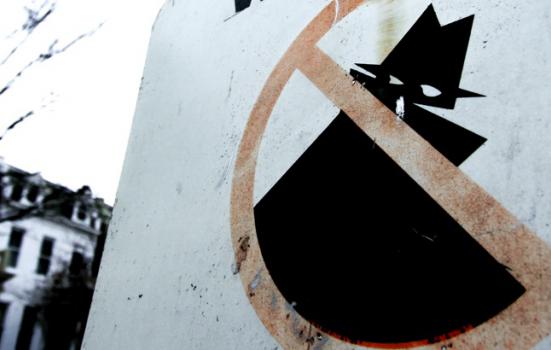How do you stop art crime when it is the most lucrative criminal sub-sector after guns and drugs? Jeanna Heeraman has a few tips.

Jessica Lucia (CC BY-NC-ND 2.0)
Art theft is huge business – it has been for a long time – and the industry is yet to find a fool-proof way of preventing robberies of iconic pieces. Throughout the 20th century a number of notorious heists took place: in 1974 thieves from a group led by the IRA’s Rose Dugdale took paintings worth over £50m at today’s prices from the Beit family in Ireland, stealing paintings by Gainsborough, Rubens, Vermeer and Goya; in 1990, the Isabella Stewart Gardner museum in Boston fell victim to thieves that stole works by the likes of Rembrandt, Degas and Manet. The total costs of art crimes run in to the billions.
Countries are tightening anti-money laundering laws to better protect the art market of thefts that affect galleries. For example, in late 2014, the Swiss parliament passed new laws to freeze assets in Swiss bank accounts, and, as of January 2016, it is reported that cash transactions will be capped at $104,000 (100,00 CHF). But how can art galleries, museums and collectors prevent theft and forgery in what is the third most lucrative criminal sub-sector after guns and drugs?
Check your art is the real deal
Exhibiting a new artist? Ask yourself a number of simple questions: where do they normally sign their work? How? Does every painting in your gallery have marked signatures? Do the works have a certificate of authentication signed by the artist, the publisher, and the agent of the artist or a recognised expert?
Forgery has consistently made up a significant chunk of the black market for art. Shaun Greenhalgh, working alongside his mother and father, forged works by the likes of Barbara Hepworth and Thomas Moran over a seventeen year period and amassed sales of over $11m. Amongst others, the family sold works to the Victoria and Albert Museum in London. Arts organisations have struggled for decades to prevent themselves falling victim to crimes of such magnitude, but by being strict about authentication, and using all available technology and verification processes, they can begin to clarify whether a work of art is a forgery or the real thing.
Speak up
Our recent data graphic on art theft and forgery discovered that the authorities do have some teams in place to fight organised art crimes, although the total provision is limited. In the US for example there are only 16 art crime officers – one for every 21 million people. In the UK the ratio is even smaller, with one officer for every 26 million. With too few resources and competing priorities the authorities can do very little. This was highlighted in the case of the Matisse painting ‘Le Jardin’ which was stolen in 1987 and found 25 years later, with no intervention from the police.
Artists, art lovers, gallery professionals and experts need to speak out against forgeries to highlight challenges and raise awareness. Create blogs and hash tags for your work of art – these are social forms of awareness.
Real-time monitoring systems
One of the biggest challenges is that stolen paintings are quickly moved and rarely stay in the country of origin. Art dealers, owners and galleries can invest in real-time security cameras to monitor their collections and attach radio tags to artworks which transmit information and sensor data. Many museums are investing in these to track the movements of works in and out of storage and when they go on loan.
It is difficult to envisage a time when art theft and forgery will be eradicated for good. Especially in the digital era when replication is becoming easier. Thieves will continue to look for ingenious ways to con the general public, but by working together we can at least start to reduce the problem.
Jeanna Heeraman is a Digital Marketing Executive at Builtvisible and Printerinks.
builtvisible.com




